Archives of Loren Williams Fly Tying Tutorials.
Rhyacophilia
Fly and Photos by Loren Williams
Rhyacophilia represent the family if free-living caddis. These are commonly called "green rock worms" and are unique in that they do not spin nets or build cases. Instead, they anchor their position using a set of anal hooks and release into the drift to move. This mode of locomotion makes them especially available to trout and worth imitating if you are an imitative tyer and angler.
The pattern shown has served me well for many years. The use of a curved shank tends to invert the fly when fished so it hangs-up less and prolongs your bottom oriented drift. The use of scud back makes the fly more easily "slide" through the water so it sinks faster. The bit of sheen certainly does not hurt!
Rhyacophilia are extremely common and this pattern is extremely simple. Go for it!
MATERIALS
Hook: Partridge CZF
Thread: Black
Shellback: Olive 1/8" Scud Back
Rib: Mono Thread
Abdomen: #10 Masterclass
Thorax: Fox Squirrel
Click photos to enlarge!
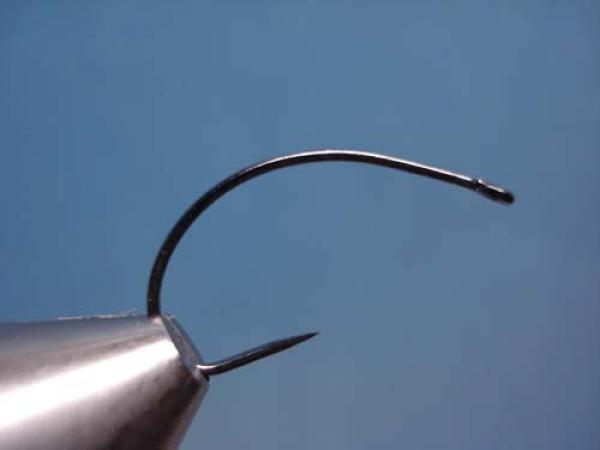
Place hook firmly in your vise.
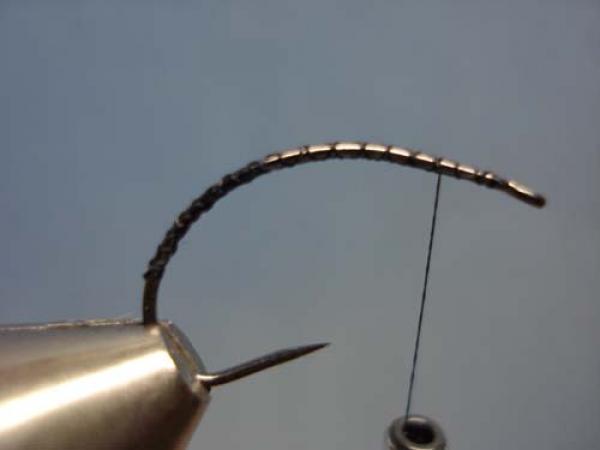
Coat the shank with thread, end with thread a bit behind the eye.
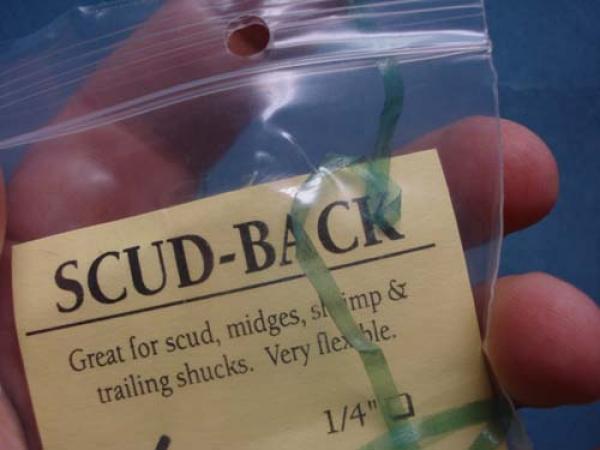
Cut a section of scud back and secure it behind the eye.
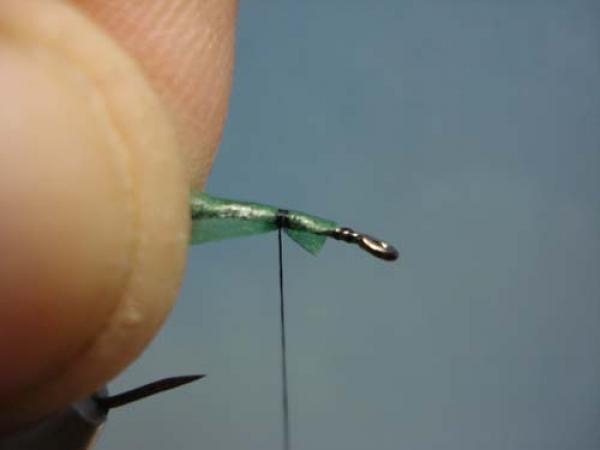
While stretching it, bind the scud back rearward along the shank.
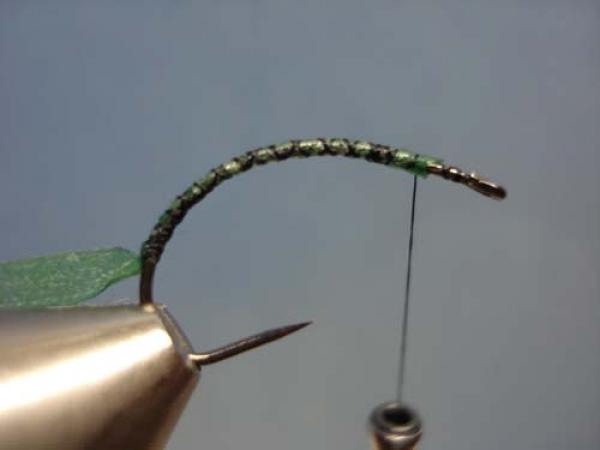
Once secured down around the bend, bring thread forward.
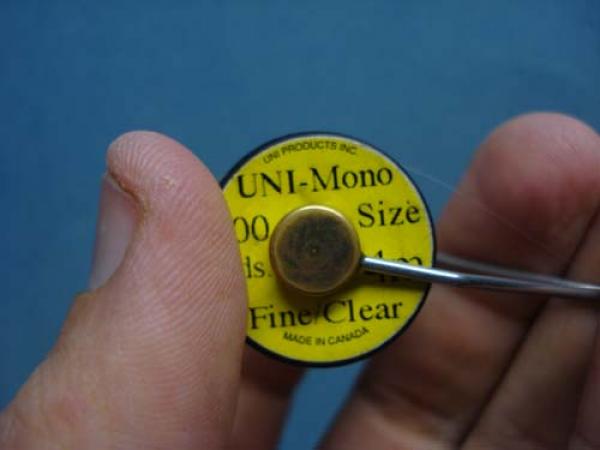
Secure the mono thread as you did the scud back.
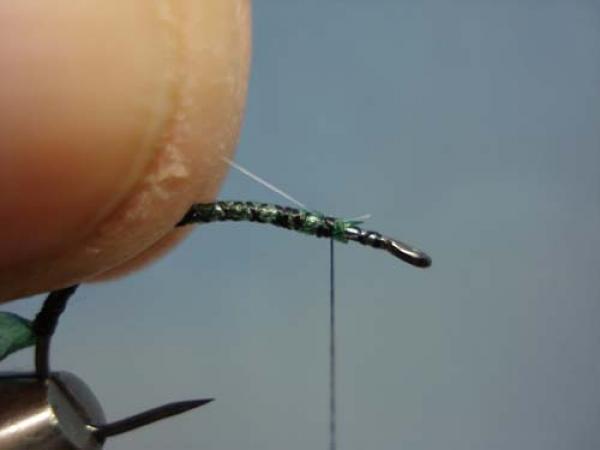
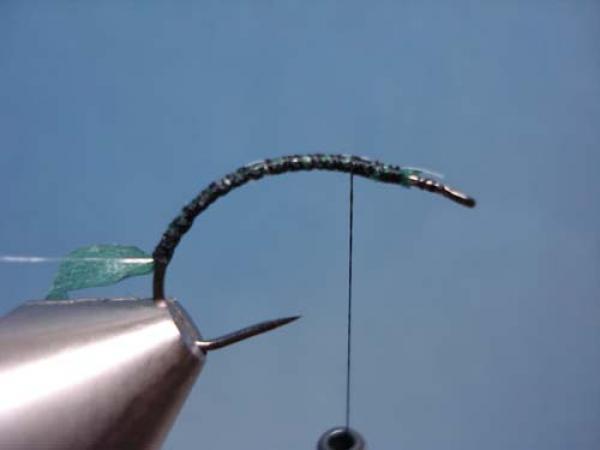
Bind it to the rear and bring the thread back to the 1/4 position on the shank.
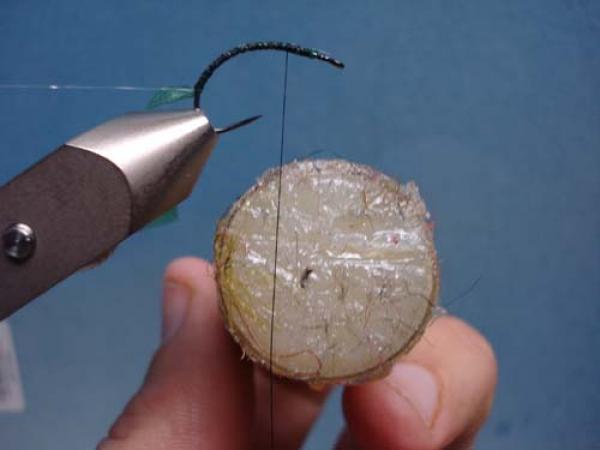
Apply some tacky dubbing wax to the thread.
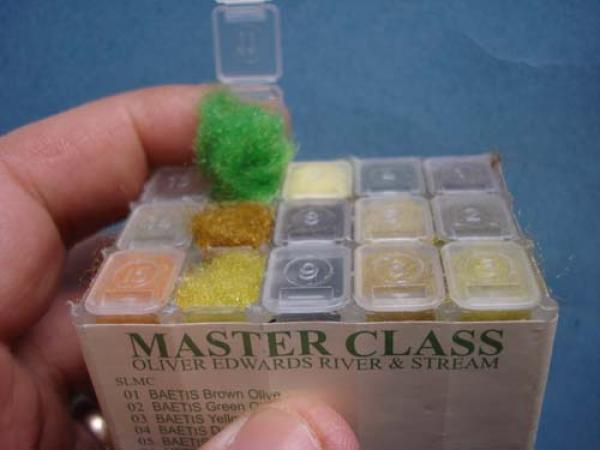
Chop the #10 dubbing up into short pieces.
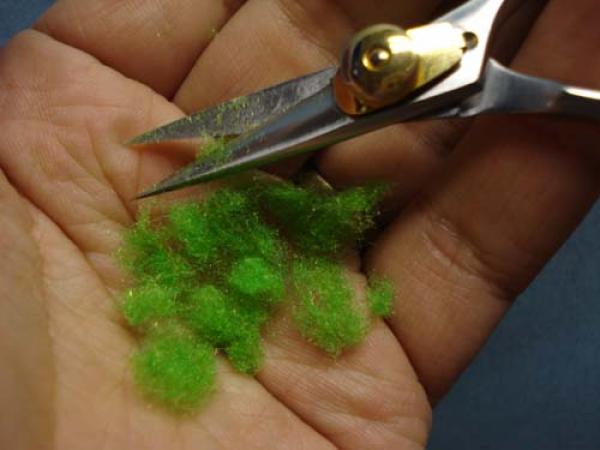
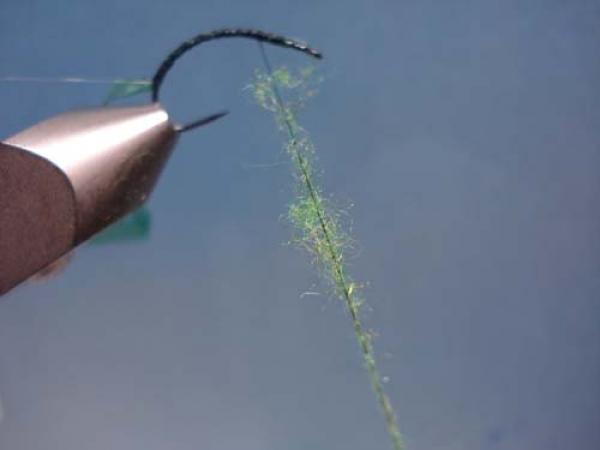
Touch the dubbing to the thread and spin the bobbin vigorously...
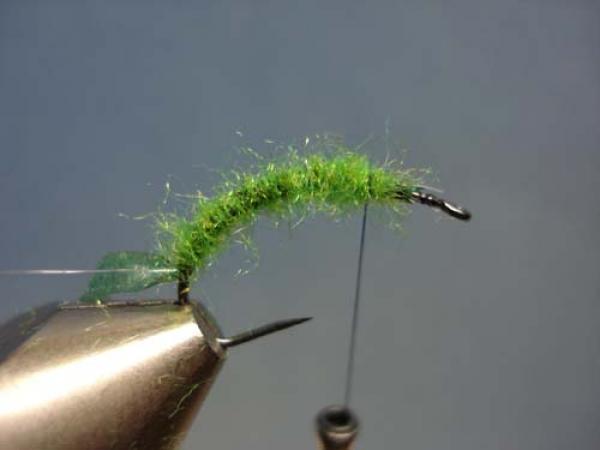
...and dub a very slim body. Several thin applications work better than one thick layer. It is quite fine for the black thread to sort of leak through.
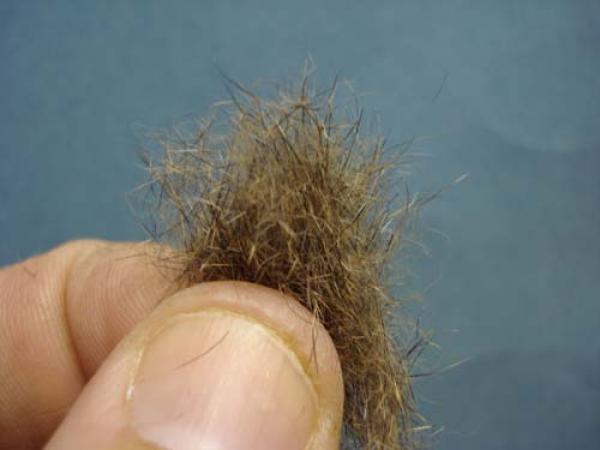
Obtain some fox squirrel dubbing.
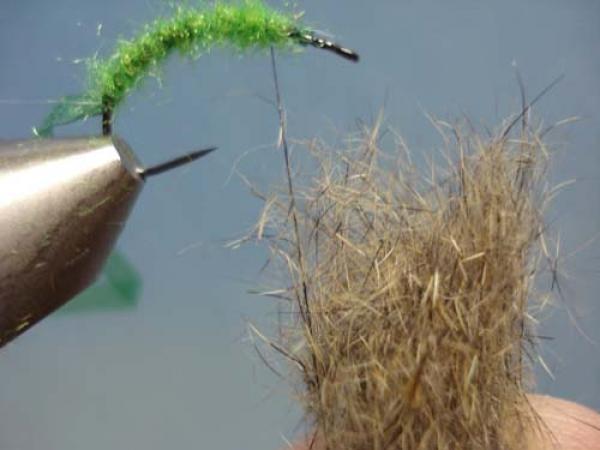
Touch dub it as above.
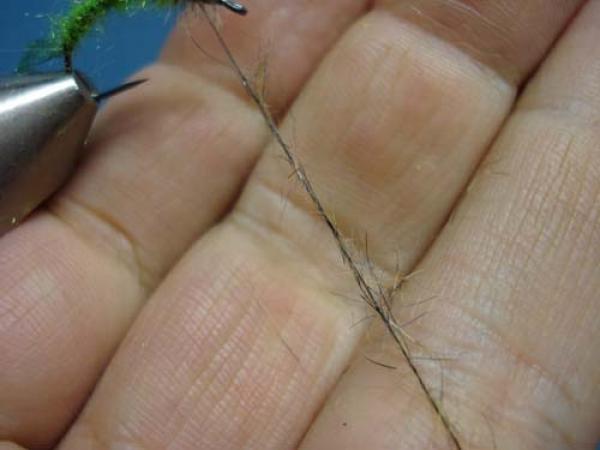
Spin the bobbin to get the fibers locked in place.
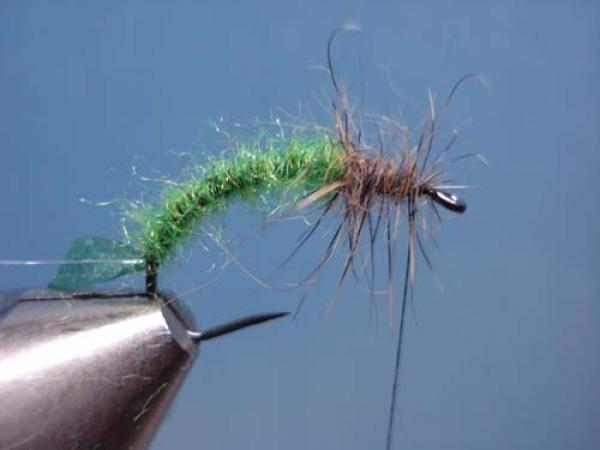
Dub the front fourth of the hook to represent the head/legs/thorax.
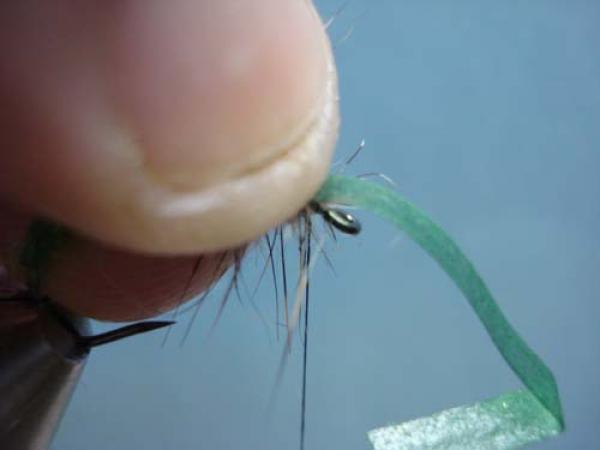
Fold the scud back forward and pinch it in place as shown.
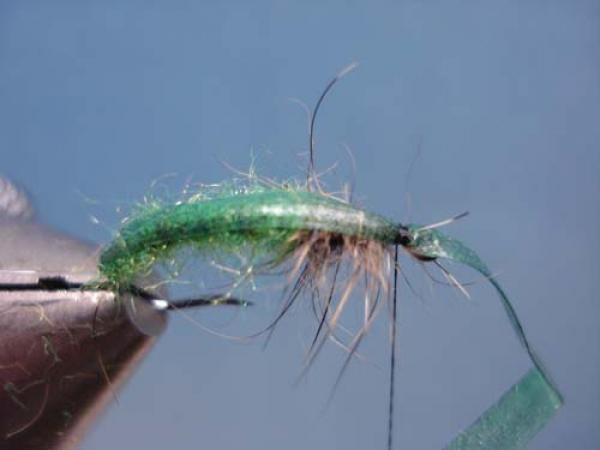
Secure with thread. Only a few tight wraps!
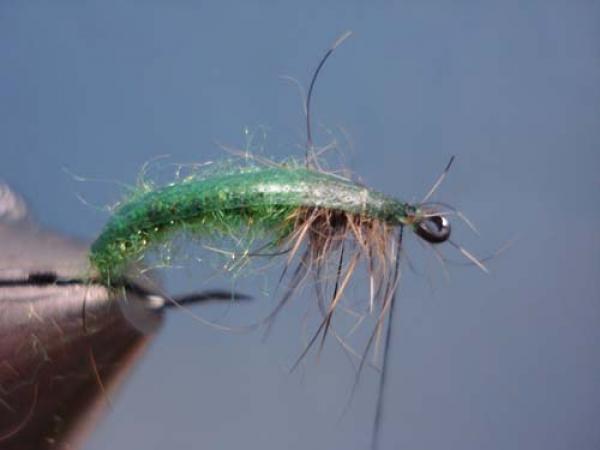
Cut the excess.
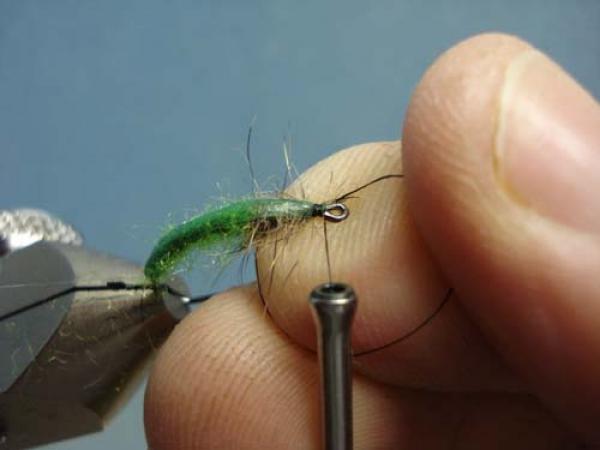
Place a half hitch over the head prior to the rib. If you do not, and bump the bobbin while wrapping the rib you run the risk of losing your scud back!
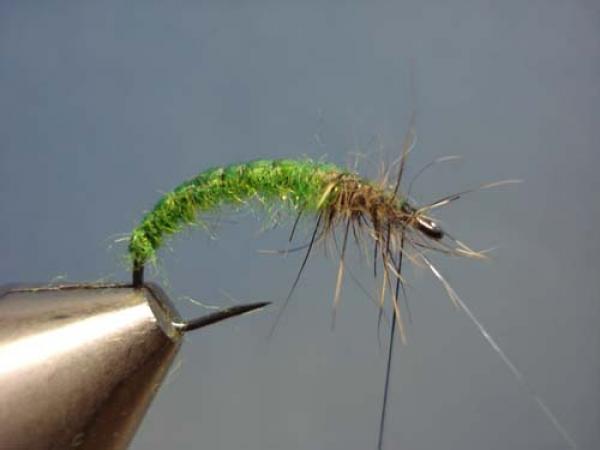
Rib the body with the mono thread. These insects have many small segments so feel free to rib the fly likewise-it'll build a more durable fly.
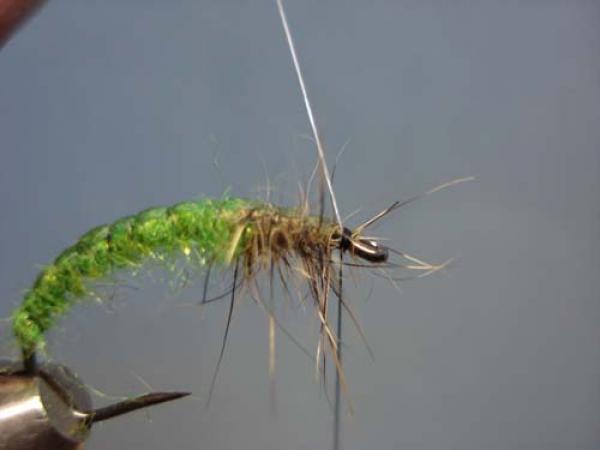
Secure the mono thread and then fold it back and secure it again. Mono is slippery!
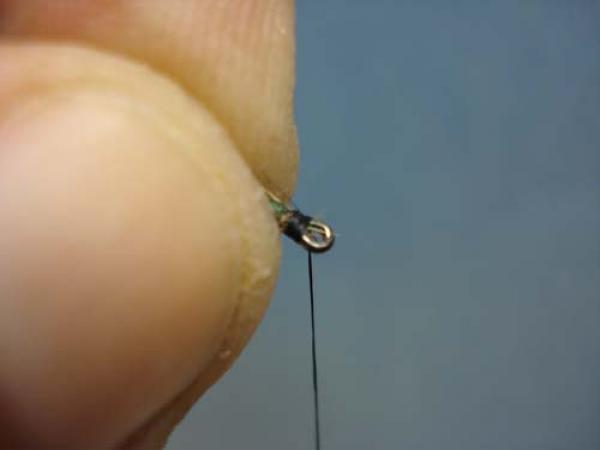
Clip the excess mono. Pull back the stray fibers and build a tight, small head.
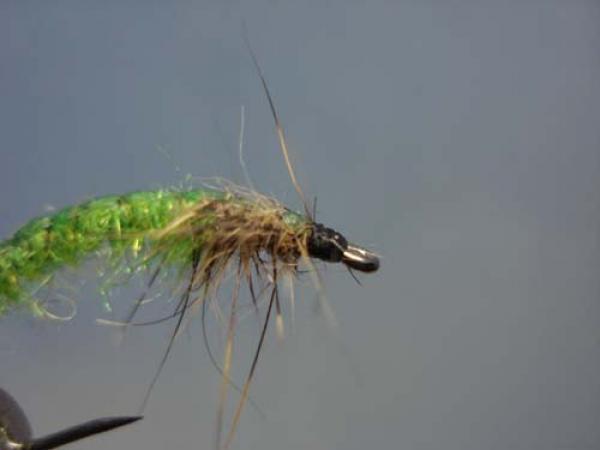
Whip finish and clip the thread.
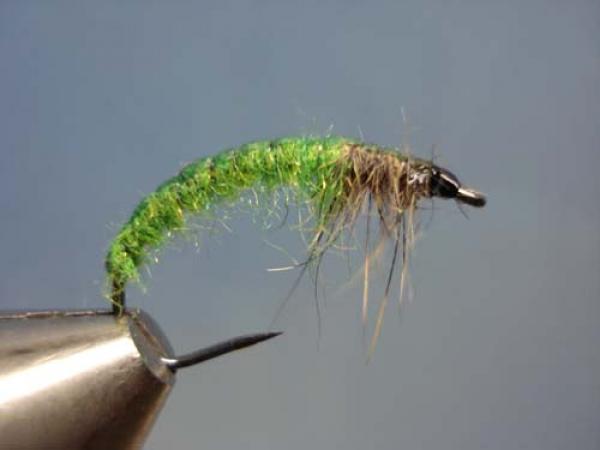
A finished rhyacophilia caddis larva.